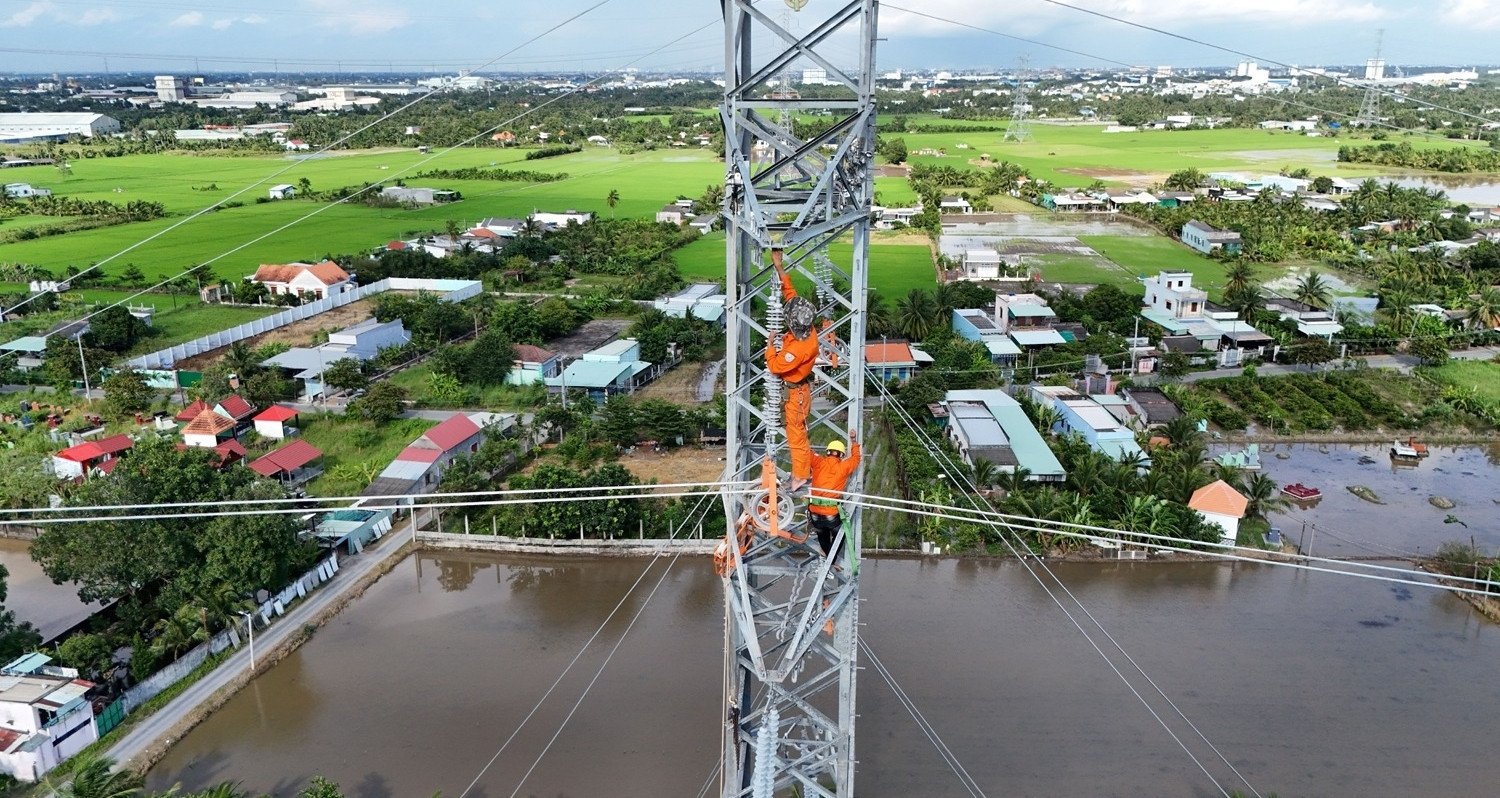Large enterprises must take the lead in applying technology (CN) and digital transformation (DT), increasing competitiveness, thereby leading other Vietnamese enterprises, and stirring up the country's science and technology wave.

Growth by traditional drivers has gradually reached its limit. We can grow up to 7% by traditional drivers. To increase further, from 7% to 10%, we must find new growth drivers. This new 3% growth can only come from science, technology, innovation and digital transformation (ST&T, ST&T and DI). Agriculture has helped Vietnam escape poverty. FDI and industry have helped Vietnam become an upper-middle-income country. To become a high-income country, we must rely on ST&T, ST&T and DI. The trio of ST&T, ST&T and DI are the main driving forces to develop modern productive forces, perfect production relations, innovate national governance methods, develop socio-economics, prevent the risk of falling behind, develop breakthroughs, and become rich in the new era.
Science and technology can only contribute to economic growth if research results are commercialized. To promote commercialization, research results from the State budget should be owned by research institutions. To stimulate the creativity of scientists and engineers, they should be given a share, from 30-50% of commercialized results. The State benefits from taxes and jobs when research results are commercialized and generate revenue and profit.
Research institutes receive money from the State for research based on a research contract. But the money that research institutes receive from the State for research must be spent as the budget of a State administrative unit, as a State agency. State agencies do things that are known and defined. Research is doing things that are unknown and do not exist, so it must follow a different mechanism. Let research institutes spend the money they receive from the State for research according to the spending mechanism of enterprises, the contract mechanism. The State should manage according to the research results, that is, manage according to the goals, instead of managing the way of doing things, managing the process. The State accepts risks in research, but there will be risk management solutions, such as allocating budgets and managing research results by stage, classifying research (basic, applied and deployed) according to the level of risk (high, medium and low) for different management, using digital transformation to make research transparent, etc.
Up to now, we have managed the way of doing things, valuing invoices and documents more than research results. Therefore, the State has collected a lot of invoices and documents but has received few research results. Science and technology managers have focused on accepting invoices and documents more than accepting research results. This mechanism is up to us, changing it is just a matter of awareness and can be done very quickly, right in the first half of 2025, by amending the Law on Science and Technology and related laws.

To develop science and technology, innovation and digital transformation, high-quality human resources are needed. To improve the quality of training, to train high-quality human resources of universities, it is necessary to attract research, it is necessary for the State and enterprises to order university research, and it is necessary for universities to become research centers. To do this, universities need a magnet to attract research. That magnet is the laboratories that enterprises cannot afford to invest in, especially SMEs. Therefore, the State needs a large program to invest in key laboratories for universities. Each year, the State can spend 5% of the total expenditure on science and technology, innovation and digital transformation to invest in key laboratories for universities. Doing this continuously for 5 years will fundamentally change the research infrastructure of universities. Currently, each year, we invest less than 500 billion VND in laboratories.
To develop science and technology, innovation and digital transformation, large enterprises must take the lead.
1- If we want big businesses, the State must assign them big jobs, place orders, and assign them tasks. Only with big jobs can Vietnamese businesses grow. Once a business has become successful, it needs big jobs and big challenges to create Vietnamese pride. If we assign big jobs, if they don't have enough resources, they will hire Westerners to do it for them, rather than letting Westerners hire us to do domestic projects. It was okay before, but if it's still like that now, it's very sad.
Large enterprises must also take on national tasks, master strategic technology, and take on key national digital transformation projects. This is the responsibility of large enterprises to the country. This is also the task that Resolution 57 of the Politburo assigns to national technology enterprises, with the goal of forming large Vietnamese technology enterprises. Resolution 57 sets the goal of forming 5 large digital technology corporations on par with advanced countries by 2025.
2- Enterprises, especially large enterprises, must take the lead in applying technology and digital transformation (IT and CĐS), thereby leading other Vietnamese enterprises to also apply IT and CĐS, stirring up the country's science and technology wave. Large enterprises should increase spending on IT and CĐS innovation. Increasing spending will promote the country's GDP growth. Increasing spending on IT and CĐS will increase labor productivity, improve corporate governance capacity, and increase business competitiveness. Increasing spending on IT and CĐS will create a market for Vietnamese IT and CĐS enterprises, helping these enterprises develop. So, one arrow hits several targets. Large enterprises must take responsibility for IT and CĐS innovation to contribute to creating an additional 3% for GDP growth.
3- The country's large trade and service corporations should have a strategy to transform into technology, industrial, trade and service corporations. Without technology and industry, Vietnam cannot overcome the middle-income trap to become a high-income country. Only by doing technology and industry will large enterprises have enough resources to take the lead. If these enterprises do not do it and continue to do trade and services, it will be difficult for Vietnam to break through and rise up.
4- Large technology enterprises must go abroad to conquer the world, thereby learning and improving their international competitiveness, to prove that they are excellent enterprises. If Vietnamese enterprises cannot compete internationally, Vietnam will never be able to become a developed country. To compete internationally, we must rely on and use science and technology, innovation and digital transformation. And this is also a way to promote national enterprises to develop science and technology, innovation and digital transformation. If we do not conquer the world, the world will come here to conquer Vietnam, and there will be no more Vietnamese enterprises.
The Ministry of Information and Communications is proposing to the Government to submit to the National Assembly for approval a number of special policies to promote economic growth, such as allowing bidding and shortening the process of digital transformation projects; bidding for submarine optical cable projects; the State assigning tasks and placing orders to master strategic technologies and large digital transformation projects; increasing the regular budget for hiring IT services; hiring a cloud computing center exclusively for the Government to support digital transformation projects of ministries, branches and localities while the National Data Center has not been completed; building a high-performance AI computing center to serve technology research and AI application development; supporting up to 30% of the total investment value of the first semiconductor factory in Vietnam; supporting up to 15% of the 5G investment value if by 2025, network operators have nationwide coverage; a controlled testing mechanism for digital technologies.
Source: https://vietnamnet.vn/muon-phat-trien-khcn-dmst-va-cds-doanh-nghiep-lon-phai-di-dau-2370520.html




























































Comment (0)